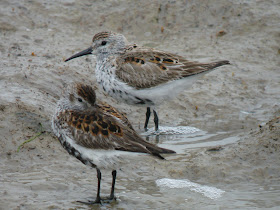
Overall a rather pleasant disaster with no sought after rare gadfly petrels. The crew for this trip dropped out so it was just me and Rolando (the skipper) and the weather was just about as bad as it gets here in the spring so we only managed a few hours at sea before fear or sea sickness took me down. The blue planet this was not: http://peteralfrey.blogspot.com/2010/05/graciosa-pelagic-may-2010.html
The Azores are a superb pelagic destination and more trips will certainly reveal more surprises. In the last four years my highlights have included dark-morph Trindade Petrel, 2 Fea's Petrels and some of the largest groups of Wilson's Petrel in the WP. In addition there is the fantastic suite of local breeding seabirds; the endemic Monteiro's Petrel, Grant's Petrel, Barolo's Shearwater, Bulwers Petrels, Roseate Terns, Cory's Shearwaters and Azorean Gull. Regular seabird migrants include Long-tailed, Arctic, Pomarine and Great Skuas, Sooty, Great and Manx Shearwater with rarer Grey Phalarope, White-faced Storm Petrel and Sabine's Gull. Vagrants in the past few years include 6 Trindade Petrels http://www.birdingazores.com/photoref.php?s_id=191&b_id=10366&stat=1 (a recent one) , 2 Black-capped Petrel, Bermuda Petrel, Black-browed Albatross, Masked and Brown Booby, White-tailed and Red-billed Tropicbird.
Here are some posts from our last autumn pelagic:



































 .
.






.jpg)







